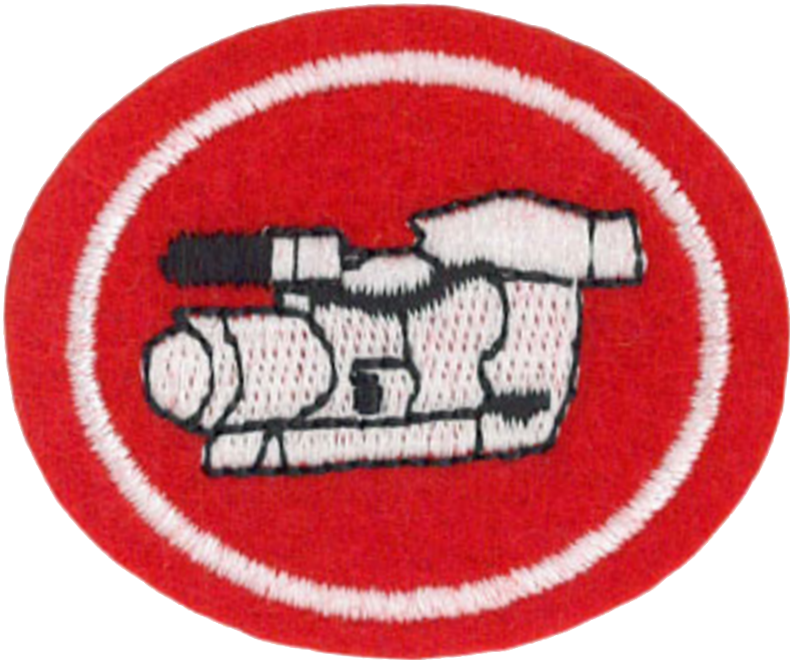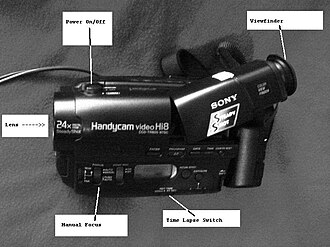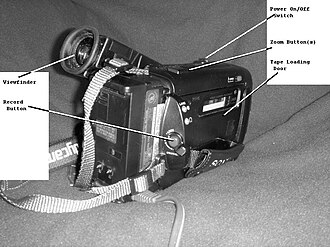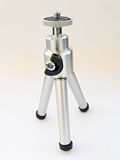Respuestas para la especialidad JA de Video
1
VHS-C - VHS-C is the compact VHS format introduced in 1982 and used primarily for consumer-grade compact camcorders. The format is based on the same videotape as is used in VHS, and can be played back in a standard VHS VCR with an adapter. Though quite inexpensive, the format is largely obsolete even as a consumer standard and has been replaced in the marketplace by digital video formats, which offer smaller form factors and better video quality.
The magnetic tape on VHS-C cassettes is wound on one main spool and used a sort of a gear wheel which moves the tape forward. It can also be moved by hand and so is the spool. This development hampered the sales of the Betamax system somewhat, because the Betamax cassette geometry prevented a similar development.
VHS-C was one of the pioneering formats of the compact camcorder market, and was released to compete with Video8. VHS-C was larger than Video8, but was compatible with VHS tapedecks, making the choice between the two non-obvious, and splitting the market; VHS-C also eventually crowded full-sized VHS camcorders out of the market. A higher quality version of VHS-C was released, based on S-VHS, known as S-VHS-C, that competed against Hi8, the higher quality version of Video8. The arrival on the market of inexpensive S-VHS-C camcorders led to the inclusion on many modern VCRs of a feature known as SQPB, or SuperVHS Quasi-PlayBack, but did not make a significant impact on the market as the arrival of MiniDV as a consumer standard made low-cost, digital, near-broadcast-quality video widely available to consumers, and rendered analog camcorders largely obsolete.
Video8 - The 8 mm video format refers informally to three related videocassette formats for the NTSC and PAL/SECAM television systems. These are the original Video8 format and its improved successor Hi8 (both analog), as well as a more recent digital format known as Digital8.
Their user-base consisted mainly of amateur camcorder users, although they also saw important use in the professional field.
The format was introduced in 1985, the year that Sony of Japan introduced the Handycam, one of the first Video8 cameras. Much smaller than the competition's VHS and Betamax video cameras, Video8 became very popular in the consumer camcorder market.
2
|
|---|
2a
This is what you look through to see what the video camera is 'seeing'.
2b
You press this button to start and to stop recording.
2c
The video camera 'sees' through the lens.
2d
You use this button to zoom in (get a closer view) or zoom out (get a wider view).
2e
This button is the master switch to turn on/off the video camera.
2f
Some video cameras have a manual focus and/or zoom levers/rings so that you can fine tune the focus.
2g
You insert the video tape through this door.
2h
This switch allows you to use the video camera to record short takes (e.g. 5 seconds) every so often.
3
There are many messages that are seen in the video camera's viewfinder. You should look at the manual that came with your equipment for the unique messages.
Some common messages could include:
- Battery Low : this is the condition where there is little or no charge left in the battery.
- End of Tape : this is the condition where you are getting to the end of the video tape.
- Lens Cover : this is because you did not remove the lens cover on your video camera.
- Pause : this tells you that you are ready to record, but not recording yet.
4
The battery allows you to use your video camera without being connected or wired to a power source. Normally you would use the supplied adaptor which will either charge the battery with the battery still attached to the video camera, or, the battery would be removed an attached to the charger to re-charge the battery.
A Ni-cad battery will get the best life when you keep it fully charged, or, trickle charge (charge a little bit at a time). If it is not going to be used for a long time, it should be discharged down to 40% (although some manufacturers recommend discharging it completely). Your best information would be found in the manual for your equipment.
The nickel-cadmium battery (commonly abbreviated NiCd and pronounced "nye-cad") is a popular type of rechargeable battery using the nickel hydroxide (NiOH) and metallic cadmium (Cd) as the active chemicals.
The principle advantages of NiCd over other rechargeable types is lower weight for a given quantity of stored energy, good charging efficency, small variation in terminal voltage during discharge, low internal resistance, and non-critical charging conditions.
The abbreviation NiCad is a registered trademark of SAFT Corporation and should not be used to refer generically to nickel-cadmium batteries, although this brand-name is commonly used to describe all nickel-cadmium batteries.
5
The video camera can also be powered using household electricity. In the photo above (with the labeled parts), you can see a wire leading away from the video camera. An adaptor is attached to the video camera where the battery usually goes, and is provding power to the video camera.
6
This is your activity. Here are some comments. Your instructor may have more comments.
6a
Zooming in will get the viewer closer to the subject. You would do this if there were some detail that the viewer should be able to see. Zooming out will increase the field of view. For example, you might do this to show the relative size of something to something larger. Zooming too fast can sometimes make it difficult to 'view' a video.
6b
Lighting is always important, otherwise the viewer may not be able to see what you are shooting.
6c
Panning moves the view from left to right, or, right to left. If you move too fast, the viewer can experience 'motion sickness'.
6d
Nobody likes to see a video where everything is jumping and shaking all the time. Keep the video camera steady.
7
For the most part, the tripod should be level. Some tripods have a leveling bubble to help you.
8
Note that most video productions (including amateur productions) are now done digitally rather than with tape. It is far easier to edit video digitally than with an analog VCR, and the results are far superior.
Most digital cameras on the market can also shoot video as can nearly every cell phone on the market. These cameras create files that can be stored on a computer and edited with a wide selection of video editing software. Some may even be included with your computer's operating system.
Here are some links:
9
Some of the information in Requirement #8 above may also be able to help you with this requirement.
10
This is all you. You could take various videos throughout the year and put together a summary to show at the end of the year about what your club has done. Could be a good promotional video. Enjoy!
10a
10b
10c
10d
10e
10f







